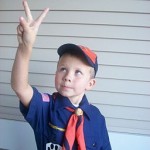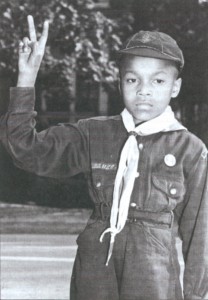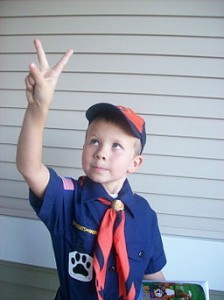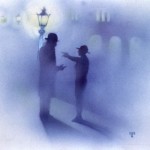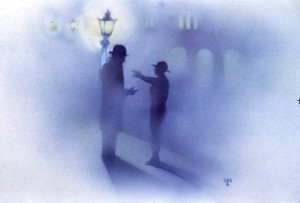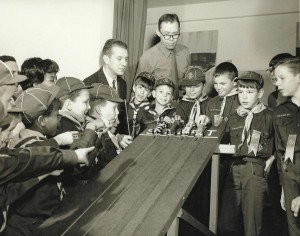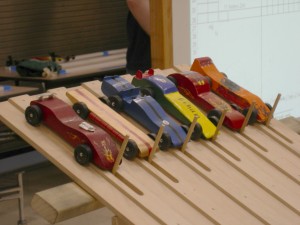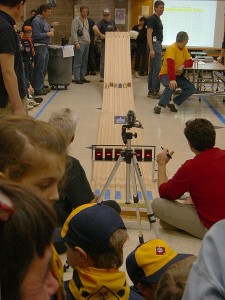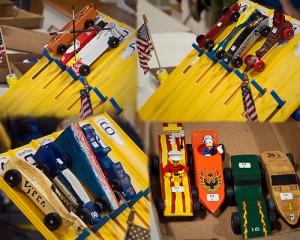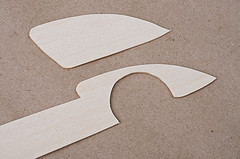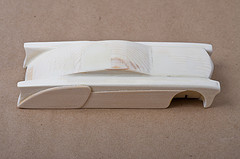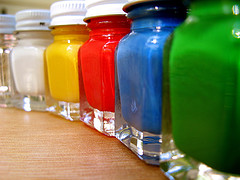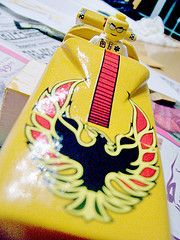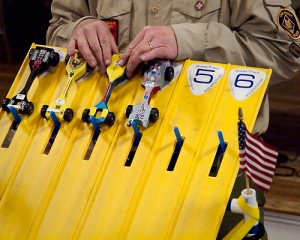The Birth of Cub Scouting®
February 11, 2011
1930 brought on a significant addition to Scouting with the development of Cub Scouting for younger boys.
In the early years of the BSA, leaders recognized what they called a “younger boy problem,” meaning that boys below the age of 12 were watching their older brothers or relatives enjoy all Scouting had to offer and wanted to join in the fun. The problem was, until Cub Scouting became official, Boy Scout troops were either allowing younger boys to participate in the older boy’s program or throwing their support behind a junior program Baden Powell established in Britain called “Wolf Cubbing.” Powell had even written a handbook for younger boys entitled, The Wolf Cub’s Handbook.
Due to the popularity of Powell’s overseas program with some BSA Councils in America, the National organization decided they needed a program that would be separate from Scouting, but still do a thorough job of preparing boys for becoming Scouts.
After several studies conducted by the National Council and the formation of a few demonstration Cubbing units in 1929, Cubbing was officially born on April 1, 1930 when the BSA allowed Cub “Packs” to register. It is interesting to note that the term “Cub Scouting” didn’t take root until 1945. The Packs were further broken down into “dens” of six to ten boys who were led by a den chief, usually a Boy Scout from a local troop. However, because parental supervision was even more important with boys of this age, assigning one of the boy’s mothers as the “den mother” became regular practice by 1932. The BSA officially recognized Den Mothers in 1936 and published The Den Mother’s Handbook one year later.
By the 1940’s there were already 286,402 boys enrolled in Cubbing and the BSA could not deny it had been an excellent addition. The organizational structure of Cubbing was this: a boy entered as a
Bobcat at the age of nine and earned advancements to Wolf, Bear, and finally Lion ranks. In 1941,
Webelos or “We’ll Be Loyal Scouts” were added. These were eleven-and-a-half year old boys who had already earned a Lion badge, along with certain requirements for becoming a Tenderfoot in the Scouts.
The uniform a Cub Scout wore showed their distinction of being a separate group from the older Boy Scouts. A Cub wore a blue cotton uniform instead of the Scout’s olive green pants and tan shirt. Cubs always wore shorts, while Scouts wore pants with shorts being optional.
The popularity of Cub Scouting and the mentoring that takes place within its ranks ensures that a fresh crop of boys will be eager to accept the honor and responsibility of being a Boy Scout every year.
Are you involved in Cub Scouting? If so, give a shout out to your Pack in the comments! Also, follow @ClassBPacks on twitter for Cub Scout news and weekly t-shirt giveaways :)
In the early years of the BSA, leaders recognized what they called a “younger boy problem,” meaning that boys below the age of 12 were watching their older brothers or relatives enjoy all Scouting had to offer and wanted to join in the fun. The problem was, until Cub Scouting became official, Boy Scout troops were either allowing younger boys to participate in the older boy’s program or throwing their support behind a junior program Baden Powell established in Britain called “Wolf Cubbing.” Powell had even written a handbook for younger boys entitled, The Wolf Cub’s Handbook.
Due to the popularity of Powell’s overseas program with some BSA Councils in America, the National organization decided they needed a program that would be separate from Scouting, but still do a thorough job of preparing boys for becoming Scouts.
After several studies conducted by the National Council and the formation of a few demonstration Cubbing units in 1929, Cubbing was officially born on April 1, 1930 when the BSA allowed Cub “Packs” to register. It is interesting to note that the term “Cub Scouting” didn’t take root until 1945. The Packs were further broken down into “dens” of six to ten boys who were led by a den chief, usually a Boy Scout from a local troop. However, because parental supervision was even more important with boys of this age, assigning one of the boy’s mothers as the “den mother” became regular practice by 1932. The BSA officially recognized Den Mothers in 1936 and published The Den Mother’s Handbook one year later.
By the 1940’s there were already 286,402 boys enrolled in Cubbing and the BSA could not deny it had been an excellent addition. The organizational structure of Cubbing was this: a boy entered as a
Bobcat at the age of nine and earned advancements to Wolf, Bear, and finally Lion ranks. In 1941,
Webelos or “We’ll Be Loyal Scouts” were added. These were eleven-and-a-half year old boys who had already earned a Lion badge, along with certain requirements for becoming a Tenderfoot in the Scouts.
The uniform a Cub Scout wore showed their distinction of being a separate group from the older Boy Scouts. A Cub wore a blue cotton uniform instead of the Scout’s olive green pants and tan shirt. Cubs always wore shorts, while Scouts wore pants with shorts being optional.
The popularity of Cub Scouting and the mentoring that takes place within its ranks ensures that a fresh crop of boys will be eager to accept the honor and responsibility of being a Boy Scout every year.
Are you involved in Cub Scouting? If so, give a shout out to your Pack in the comments! Also, follow @ClassBPacks on twitter for Cub Scout news and weekly t-shirt giveaways :)
William Boyce, A Good Turn, and the Birth of the BSA®
February 9, 2011
To honor our loyal Scouting supporters, customers and volunteers, we’d like to use the month of February to focus this blog on events related to Scouting’s history. The first post having to do with the birthday of the BSA.
The BSA was founded on February 8th, 1910, but its origins can be traced back a little earlier, to a fateful day in London. Scouts and historians will debate how much, if any, fog there was that day, or what was or wasn’t discussed between William Boyce and the Boy Scout he encountered on the streets of London in 1909, but this is what is known.
William Boyce was traveling through London on his way to British East Africa when he lost his way and a Scout came to his aid. When Boyce offered to tip the boy, he refused explaining that he was just performing his daily good turn. This simple act has been immortalized as the legend of the Unknown Scout.
This exchange between the Scout and Boyce must have left a strong impression on the businessman, since Boyce went on to found the BSA a few months later.
It has been recorded by numerous sources that the Scout did tell Boyce the location of the Scout headquarters where Boyce acquired the manual and literature he used as a guide to establish Scouting in America.
This story is inspiring for many reasons.
First, it demonstrates how a simple act of kindness can have a lasting effect on a person. I’m sure William Boyce never forgot the Scout who so willingly and self-lessly assisted him that day.
Second, it reinforces that inspiration can strike at the least expected times, if a person remains open-minded and non-judgemental. Boyce was not at a business conference or dining with some wealthy dignitary when he had the meeting that would forever alter the course of his life. He was lost, standing in the street, unsure of where to go next, until he spoke to a Scout.
Finally, the story of how Boyce founded the BSA is another example of how one man can change the world by executing an idea and seeing a plan through. Boyce educated himself on Baden Powell‘s Scouting movement, made a conscience decision to start the BSA, and the youth organization he started has gone on for over 100 years and over 110 million participants.
Are you currently involved in Scouting? If so, what good turn that you performed had positive effects beyond what you expected?
The BSA was founded on February 8th, 1910, but its origins can be traced back a little earlier, to a fateful day in London. Scouts and historians will debate how much, if any, fog there was that day, or what was or wasn’t discussed between William Boyce and the Boy Scout he encountered on the streets of London in 1909, but this is what is known.
William Boyce was traveling through London on his way to British East Africa when he lost his way and a Scout came to his aid. When Boyce offered to tip the boy, he refused explaining that he was just performing his daily good turn. This simple act has been immortalized as the legend of the Unknown Scout.
This exchange between the Scout and Boyce must have left a strong impression on the businessman, since Boyce went on to found the BSA a few months later.
It has been recorded by numerous sources that the Scout did tell Boyce the location of the Scout headquarters where Boyce acquired the manual and literature he used as a guide to establish Scouting in America.
This story is inspiring for many reasons.
First, it demonstrates how a simple act of kindness can have a lasting effect on a person. I’m sure William Boyce never forgot the Scout who so willingly and self-lessly assisted him that day.
Second, it reinforces that inspiration can strike at the least expected times, if a person remains open-minded and non-judgemental. Boyce was not at a business conference or dining with some wealthy dignitary when he had the meeting that would forever alter the course of his life. He was lost, standing in the street, unsure of where to go next, until he spoke to a Scout.
Finally, the story of how Boyce founded the BSA is another example of how one man can change the world by executing an idea and seeing a plan through. Boyce educated himself on Baden Powell‘s Scouting movement, made a conscience decision to start the BSA, and the youth organization he started has gone on for over 100 years and over 110 million participants.
Are you currently involved in Scouting? If so, what good turn that you performed had positive effects beyond what you expected?
Pinewood Derby® History
January 19, 2011
In Part 3 of our blog series to help get you ready for the Pinewood Derby, we wanted to post some of the finer points of the Derby’s history.
The Pinewood Derby was approved as an official Cub Scout Activity in 1955, but the first derby took place a few years earlier when an Art Director and long-time model builder by the name of Don Murphy got the idea for “a wholesome, constructive activity that would foster a closer father-son relationship and promote craftsmanship and good sportsmanship through competition.” Murphy’s son was ten years old at the time.
Under Murphy’s advice and leadership, 55 Cub Scouts from Pack 280C met at the Manhattan Beach Scout House in California to participate in what would be the first ever Pinewood Derby. The boys raced their cars (consisting of a block of pine, two wooden axles, four nails, and wheels) down a 31-foot racetrack while their excited parents and fellow Cub Scouts looked on.
News of the success of this simple idea, reminiscent of the life-sized Soap Box Derby’s that were already sponsored by The Management Club at the Aviation company where Murphy worked, quickly spread to other nearby Packs. Soon, Pinewood Derby’s were taking place all over Los Angeles. In 1954 Boys’ Life ran a story that described Pack 208C’s first Pinewood Derby, along with pictures and the plans Murphy had used to construct the cars.
Murphy wrote up a rule book and sent it to the BSA. After approval, the Pinewood Derby became an exciting highlight to a Cub Scout’s year. The BSA commissioned a model airplane builder, named Art Hasselbach, to design the first official kit that could be sold to Packs across the country and the wooden racers have been rolling ever since. Today Revell® makes the kits officially licensed by the Boy Scouts of America.
Merchandise related to the derby has expanded to include tools for constructing better cars, awards for fastest car and best design, as well as, custom patches and t-shirts denoting a Pinewood Derby participant.
Throughout the years, many other clubs and organizations have adopted the practice and principles of pinewood derby racing as millions of parents and children enjoy the bond of working together on a common goal year after year. In a letter sent to Scouting magazine in 1996, Murphy called the launch of the Pinewood Derby his “most outstanding accomplishment.” Murphy’s contribution to the Cub Scouts has been commended by President George W. Bush, as well as, National Director of Cub Scouting Alan Westberg.
From one Cubmaster, looking for an activity he and his ten-year old son could participate in together, came an example of cooperation, construction, and sportsmanship that will continue to thrill Cub Scouts for years to come.
For more information on the Pinewood Derby’s history, check out these resources:
Boy Scouts of America: A Centennial History, by Chuck Wills, DK Publishing; First American edition ©2009
Pinewood! The Story of the Pinewood Derby, by Don Murphy, Murphy Enterprises; 1st edition ©2001
“The Pinewood Derby” National Scouting Museum. Retrieved 2011-01-18.
The Pinewood Derby was approved as an official Cub Scout Activity in 1955, but the first derby took place a few years earlier when an Art Director and long-time model builder by the name of Don Murphy got the idea for “a wholesome, constructive activity that would foster a closer father-son relationship and promote craftsmanship and good sportsmanship through competition.” Murphy’s son was ten years old at the time.
Under Murphy’s advice and leadership, 55 Cub Scouts from Pack 280C met at the Manhattan Beach Scout House in California to participate in what would be the first ever Pinewood Derby. The boys raced their cars (consisting of a block of pine, two wooden axles, four nails, and wheels) down a 31-foot racetrack while their excited parents and fellow Cub Scouts looked on.
News of the success of this simple idea, reminiscent of the life-sized Soap Box Derby’s that were already sponsored by The Management Club at the Aviation company where Murphy worked, quickly spread to other nearby Packs. Soon, Pinewood Derby’s were taking place all over Los Angeles. In 1954 Boys’ Life ran a story that described Pack 208C’s first Pinewood Derby, along with pictures and the plans Murphy had used to construct the cars.
Murphy wrote up a rule book and sent it to the BSA. After approval, the Pinewood Derby became an exciting highlight to a Cub Scout’s year. The BSA commissioned a model airplane builder, named Art Hasselbach, to design the first official kit that could be sold to Packs across the country and the wooden racers have been rolling ever since. Today Revell® makes the kits officially licensed by the Boy Scouts of America.
Merchandise related to the derby has expanded to include tools for constructing better cars, awards for fastest car and best design, as well as, custom patches and t-shirts denoting a Pinewood Derby participant.
Throughout the years, many other clubs and organizations have adopted the practice and principles of pinewood derby racing as millions of parents and children enjoy the bond of working together on a common goal year after year. In a letter sent to Scouting magazine in 1996, Murphy called the launch of the Pinewood Derby his “most outstanding accomplishment.” Murphy’s contribution to the Cub Scouts has been commended by President George W. Bush, as well as, National Director of Cub Scouting Alan Westberg.
From one Cubmaster, looking for an activity he and his ten-year old son could participate in together, came an example of cooperation, construction, and sportsmanship that will continue to thrill Cub Scouts for years to come.
For more information on the Pinewood Derby’s history, check out these resources:
Boy Scouts of America: A Centennial History, by Chuck Wills, DK Publishing; First American edition ©2009
Pinewood! The Story of the Pinewood Derby, by Don Murphy, Murphy Enterprises; 1st edition ©2001
“The Pinewood Derby” National Scouting Museum. Retrieved 2011-01-18.
Pinewood Derby® Design Tips
January 17, 2011
Pinewood Derby season is upon us and we wanted to share some helpful blog posts to get you and your car ready for the big race. In the first post of our 4 part Pinewood Derby series, we discussed how to build your car for maximum speed. Here, we would like to offer some design tips to help you create a great-looking car you’ll want to cherish for years to come.
While parents play a major role in the construction of Pinewood Derby cars, it is our belief that the theme and initial design for the car should come from the Scout’s imagination and plan. If you are the assisting parent ask your Scout to come up with a “theme” or overall artistic idea for the car’s design. Popular themes include: classic cars, stock cars, race cars, object cars (like a pencil car), superhero vehicles, cars representing food, animal cars, cartoon cars, and just about anything else a person can dream up and build. Finding a theme will bring focus to your design and save time when assembling materials and tools.
Before discussing details or materials, it would be helpful to have the Scout sketch out on paper how the car should look. Ask them to add some color to the sketch, so you can anticipate what paints you will need.
Once you have the sketch representing the car’s theme it is time to consider if this design is something that can be built using your tools and experience level. A design should not be too complicated. Some of the best-looking Pinewood Derby cars are actually very simple designs that are well-built and carefully painted.
The next step is to draw a scaled plan of the car’s top and sides that will be used to cut the wood block. Pre-made car patterns are also available online and in books, such as
Once the wood is cut into the pattern, you are ready to paint your car. Automotive-quality spray paint can be purchased at most hardware stores. This paint will give your car’s body a professional coat and shine-just like a real car. Remember to only use spray paints in well-ventilated areas. Allow plenty of time to dry before painting anything else. For detailing, use painter’s tape to block off small areas and use scissors to cut it to outline the exact shape you need. Use a modeling paint, like Testors®, to paint small areas (don’t forget to paint the hubcaps on the wheels).
Once everything is painted and dry, attach any component pieces to the body with a wood glue or epoxy. Always follow manufacturer’s guidelines when working with adhesives. Decals can be purchased in packs from licensed dealers to add elements like flames, numbers, and stripes.
By now, you should have a professional-looking car that closely resembles the Scout’s initial sketch. Don’t forget to take some pictures of your completed car from various angles and have fun showing it off at the Derby!
Do you have a Pinewood Derby car that you are proud of? Leave a comment with a link to where we can see it. Also, for a chance to win a $100 Gift Card, enter your car in our photo contest, by posting it on Flickr with the tag: ClassBPhoto2011. We’ll be awarding a new winner every month.
Check out the blog later this week for Part 3 of our Pinewood Derby Series: The History of the Derby.
Pinewood Derby® Tips For Maximum Speed
January 13, 2011
It’s Pinewood Derby season and we want to share some tips that will help you and your Scouts have a great time at your pack’s Pinewood Derby.
In part 1 of this 4 part series, we’re going to offer some tips to consider when trying to build the fastest car.
Derby cars have been racing down tracks for over 57 years now and while car designs and the tools used to make them have come a long way in that time, the principles of having the fastest car remain the same.
The difference between having a Pinewood Derby winner and a dud usually comes down to 3 factors we’ll call W.A.W. or “wheels,” “axles,” and “weight.”
First, when buying a kit, inspect the wheels to make sure they are all smooth and perfectly round. If any of your wheels appear to have a minor defect in smoothness or shape, sand them down with a 400, 600, or 1000-grit sandpaper. Lightly sanding the hub of the wheels (where the wheel comes in contact with the axle) to create a smooth, uniform surface will reduce friction on the axle and increase speed. Also, check with your local Pinewood Derby race officials to see what wheel lubricants are allowed. Always follow manufacturer’s guidelines when using lubricants that contain potentially harmful chemicals.
Once the wheels are ready to roll, you have to attach them to your car with an axle. According to DK Publishing’s Pinewood Derby Speed Secrets there should be 1/32″ of space between the wheels and the car body. Give each wheel a spin to see that it is balanced on the axle and make adjustments until all wheels spin without bobbling or shifting forward or back. Also, a wheel should never move in or out on its axle while the car is rolling. A well-fitted wheel can spin up to 20 seconds before stopping. Checking that wheels are all aligned and making even contact with a flat surface will ensure your car will go straight down the track without losing speed.
The final factor to consider when building your car for speed is weight. If you construct your car’s body in such a way that weight can be easily added or removed, you’ll be able to make your car the heaviest allowable weight on race day. Gravity plays a big part in the Pinewood Derby. The heavier the car, the faster it will go down the track. Putty, fishing weights, modeling clay, and small pieces of hardware can be added or removed at the last minute to gain that perfect race day weight. Avoid using lead as a weighing device, as handling it is very dangerous. Pinewood Derby Speed Secrets contains plenty more advice on proper weight placement for maximum finishing speed.
Building and racing a car at the Pinewood Derby has been a rewarding experience for Scouts and their parents for years. If a little care and thought goes into W.A.W. before the race, you may just find yourself a Pinewood Derby champion when it is all said and done. Check back next week for part 2 of this series, where we will cover design ideas for creating a great-looking car.
Are you a Pinewood Derby champ? Do you have any speed secrets you’d be willing to share? If so, leave us a comment!
Vote on next Retail T-shirt Design!
February 25, 2009
We have some new designs we are considering adding to the Trading post. Please help us decide which ones to print, vote for the ones you like and also tell us the ones you do not like. You can vote by replying to this post, thank you! When we print the batch they will be sold in the trading post. You can vote for more than one design.
UPDATE: Clarified you can vote for more than one design.
| B70000 | 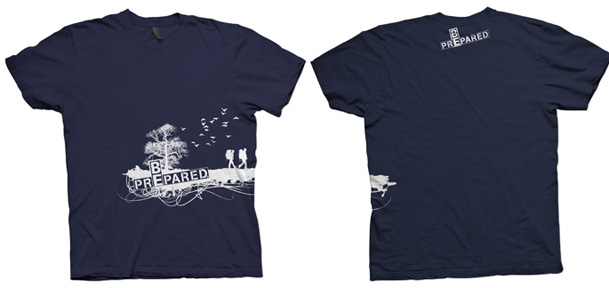 |
| B70001 | 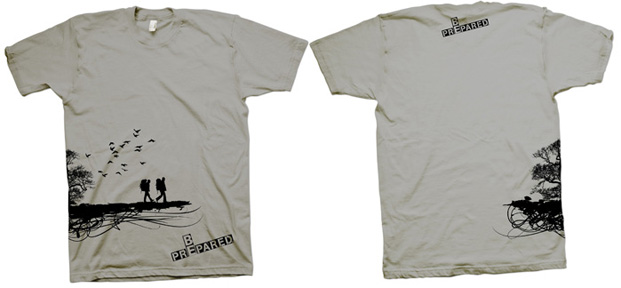 |
| B70003 | 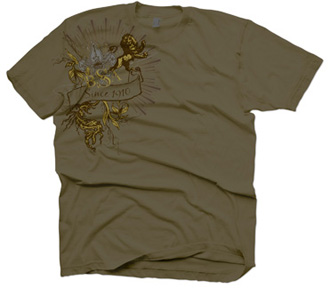 |
| B70007 | 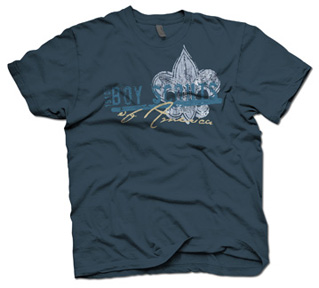 |
| B70008 | 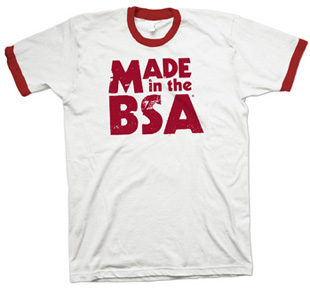 |
| B70009 | 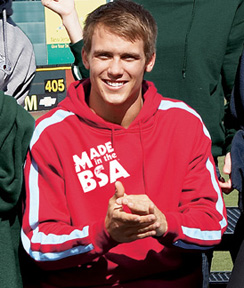 |
| B70010 | 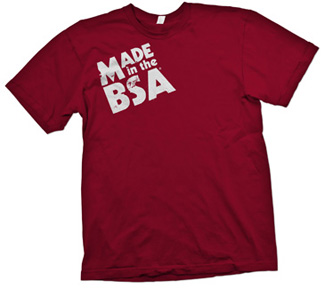 |
| B70011 | 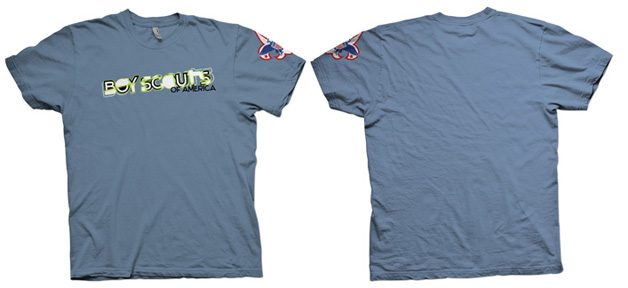 |
| B70015 | 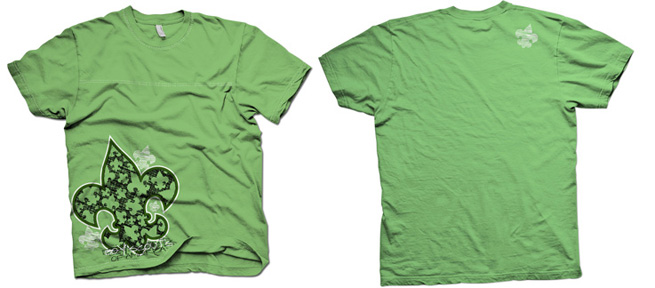 |
| B70016 | 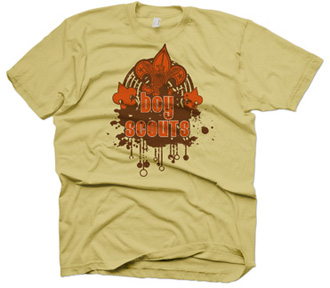 |
| B70017 | 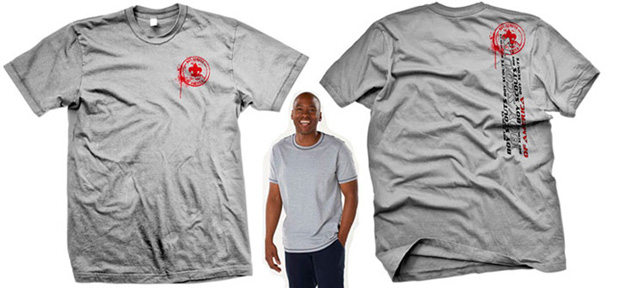 |
